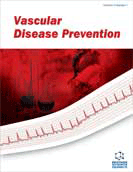
Abstract
In type 1 diabetes a main burden of complications is related to presence of nephropathy. A generalised vascular damage in patients with nephropathy has been proposed to explain this relation. A procoagulant state in type 1 diabetes patients can be related to the transcapillary escape rate of albumin in patients without nephropathy. There is however to date, no consistently demonstrated further procoagulant derangement in patients with nephropathy, but this may be due to a methodological shortcoming caused by urinary loss of the coagulation marker measured. A significant heparin-induced vitronectin release in patients with nephropathy can reflect procoagulant activity in these patients. The procoagulant state in normoalbuminuric type 1 diabetes is followed by an increased activity of tissue- type plasminogen activator, and this potential compensation of the procoagulant state is absent in nephropathy. Haemostatic balance could be achieved at a higher level of fibrin accumulation or a higher activity of a fibrin surface exposed to the circulation. Data from a venous occlusion study indicate that plasminogen activator inhibitor 1 (PAI 1), fibronectin and von Willebrand factor were significantly captured by the subendothelial matrix in patients with nephropathy. Antithrombin with specific affinity for heparan sulphate was not significantly captured and this could be a consequence of a deficiency of heparan sulphate in the subendothelial matrix. Heparin is able to reduce urinary albumin excretion in patients with incipient nephropathy, and although the mechanism for this effect is unknown, it is theoretically in accordance with the hypothesis that heparan sulphate is a key in the development of diabetic nephropathy. Future long-term studies, perhaps with oral heparins, should be performed to investigate whether such treatment, added to the current treatment set in guidelines, could further protect patients from progression in diabetic nephropathy. Such studies could also address whether generalised vascular damage can be modified.
Keywords: Diabetes, nephropathy, coagulation, fibrinolysis, haemostasis, fibrin, heparin
 1
1


